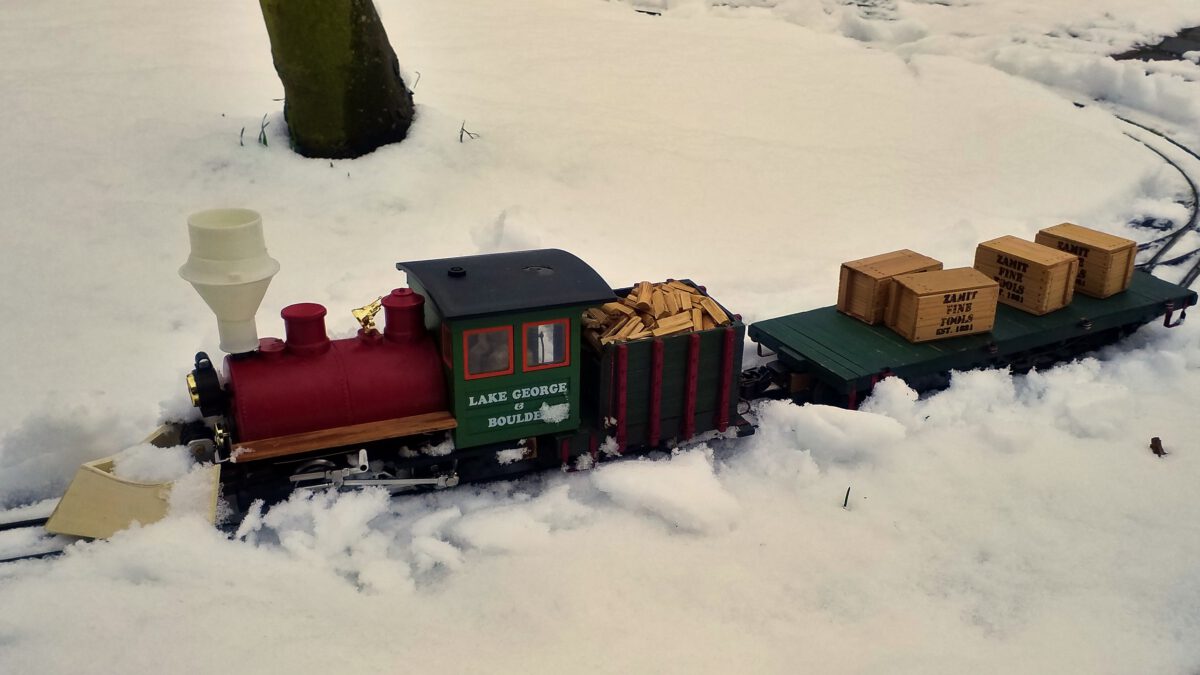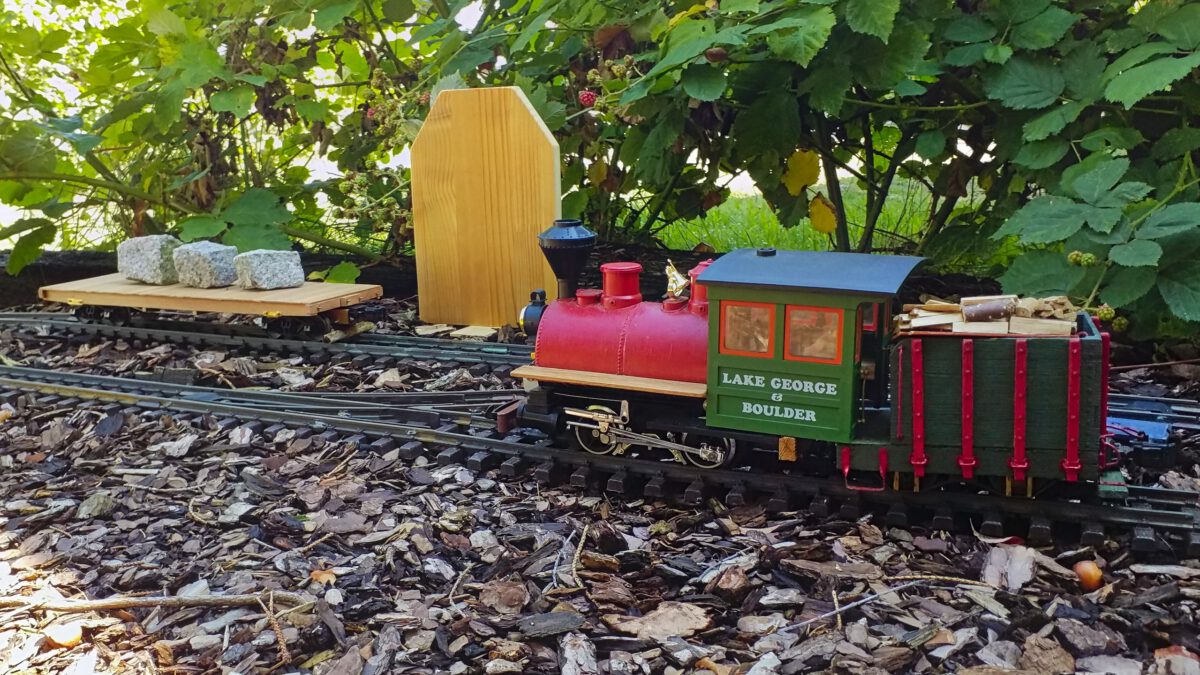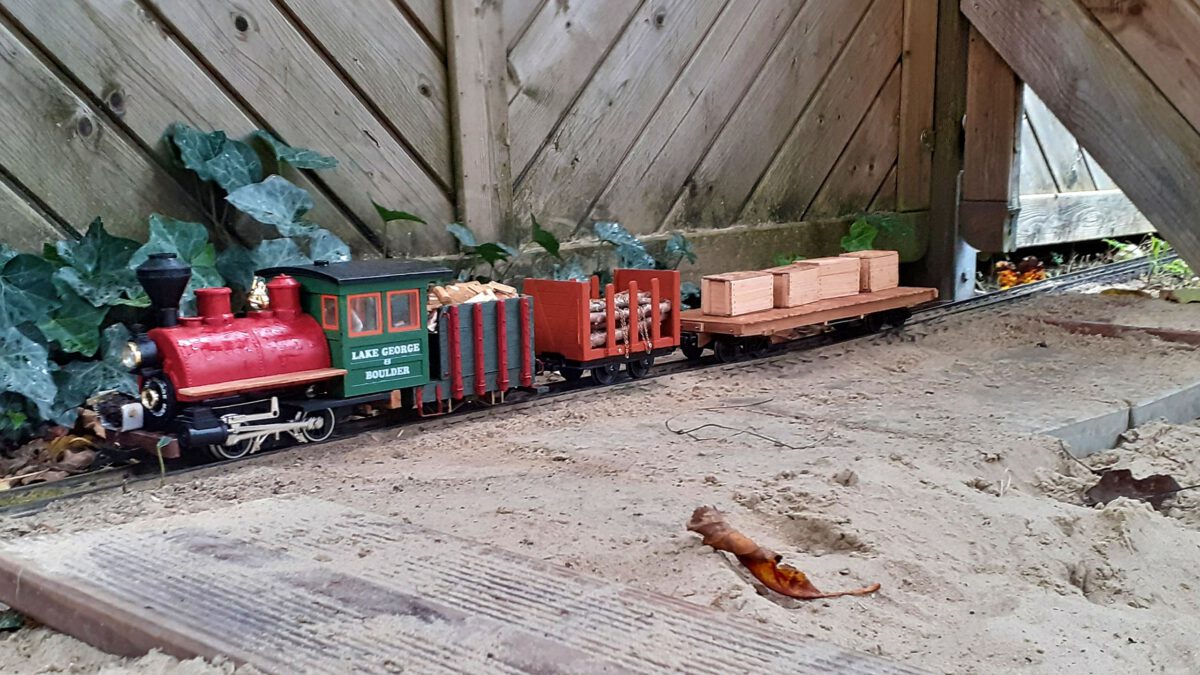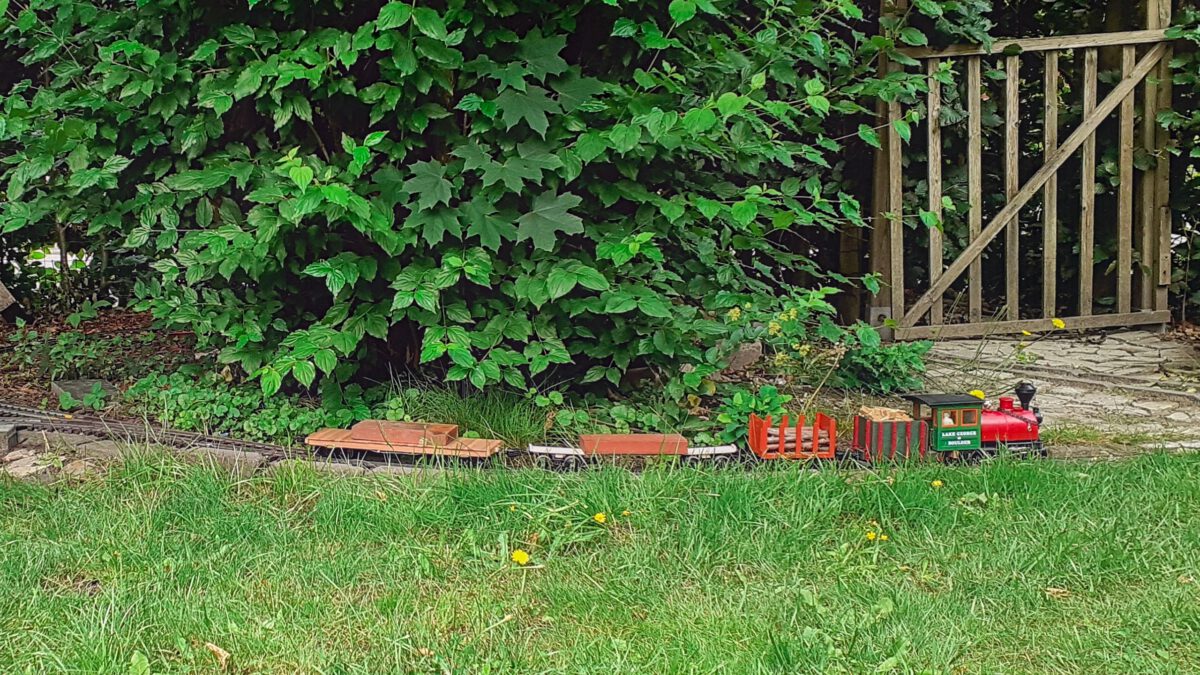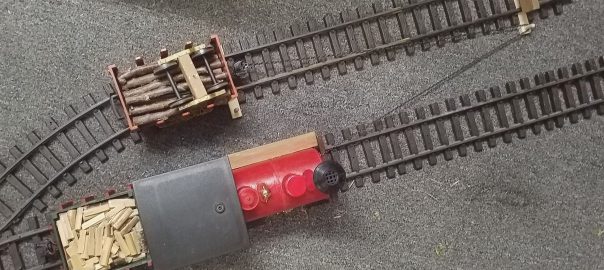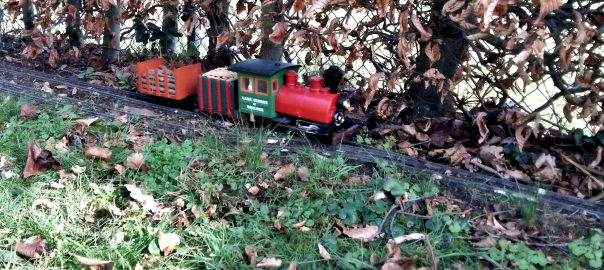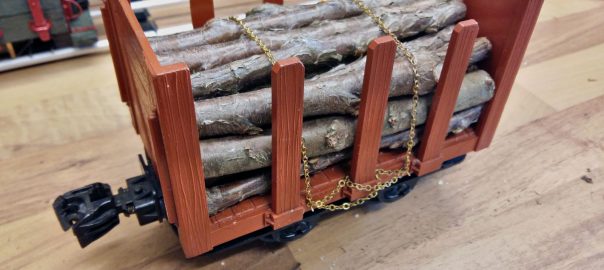Last week, after many years we finally had snowfall. I couldn’t miss out on that one, so out came the rolling stock and off we go!
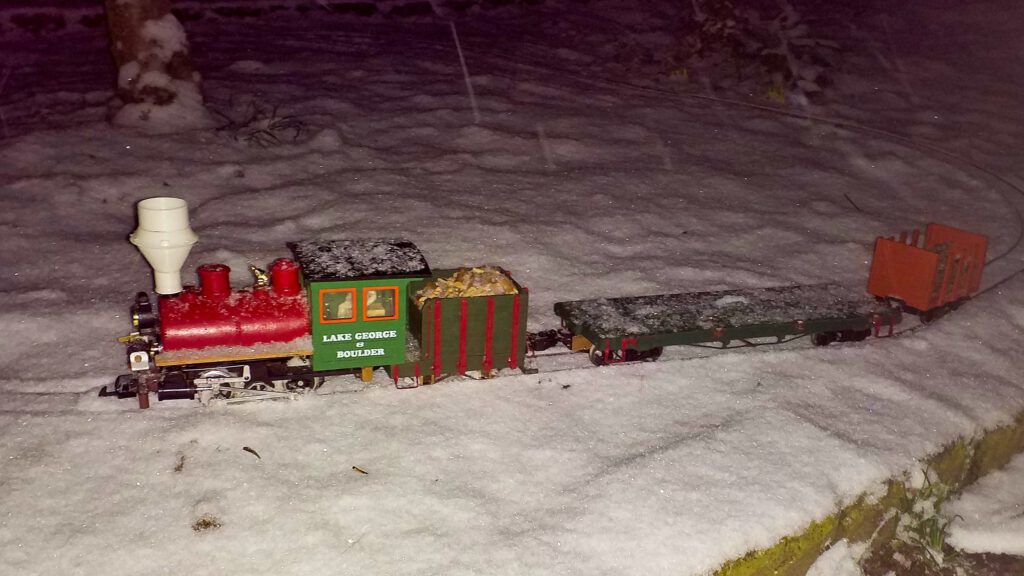
The joy got somewhat marred, though, since the falling snow caused all the wheels to build up ice and caused many derailments. However, the snow remained and when the snowfall finally stopped at 11 o’clock the next morning, the whole layout was covered in a white blanket. I just couldn’t miss out on that opportunity! So, off to the workshop.
Below, I’d like to show how one can improvise a working snow plough in less than one hour.

